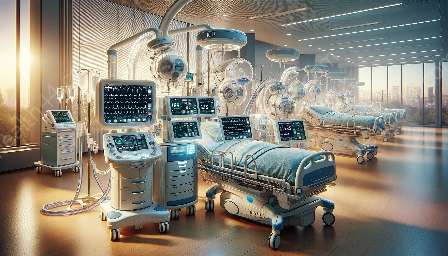Defibrillators play a crucial role in life support systems and medical devices, providing life-saving interventions for individuals experiencing cardiac arrest or other life-threatening arrhythmias. This article explores the technology, functionality, and importance of defibrillators in emergency medical care and their integration into modern medical practices.
The Basics of Defibrillators
Defibrillators are medical devices designed to deliver an electric shock to the heart to restore its normal rhythm in cases of cardiac arrest and certain arrhythmias. They are essential components of life support systems and are widely used in various healthcare settings, including hospitals, ambulances, public places, and homes.
Types of Defibrillators
There are several types of defibrillators, each with specific use cases and functionalities:
- Automated External Defibrillators (AEDs): AEDs are designed for use by laypersons and healthcare professionals to provide rapid treatment for sudden cardiac arrest.
- Implantable Cardioverter Defibrillators (ICDs): ICDs are surgically implanted devices that continuously monitor and regulate the heart's rhythm, delivering shocks when necessary.
- Manual Defibrillators: Typically used by healthcare professionals, manual defibrillators allow for manual adjustment of energy levels and electrode placement for more precise treatment.
Functionality of Defibrillators
Defibrillators work by delivering an electric shock to the heart, temporarily stopping abnormal electrical activity and allowing the heart's natural pacemaker to restore a normal rhythm. The devices are equipped with sensors that analyze the heart's rhythm and determine the need for a shock. AEDs are particularly user-friendly, providing audio and visual prompts to guide users through the defibrillation process.
Integration into Life Support Systems
Defibrillators are integral parts of life support systems, which encompass a range of medical devices and interventions aimed at sustaining vital body functions and preventing irreversible organ damage. In emergency medical scenarios, defibrillators are often the first line of defense against cardiac arrest, complementing other life-saving interventions such as cardiopulmonary resuscitation (CPR) and airway management.
Advancements in Defibrillator Technology
Over the years, defibrillator technology has evolved significantly, leading to improved device performance, portability, and user interface. Key advancements in defibrillator technology include:
- Smart Monitoring Capabilities: Modern defibrillators are equipped with advanced monitoring features, allowing healthcare providers to assess the patient's condition and make informed treatment decisions.
- Wireless Connectivity: Some defibrillators are integrated with wireless communication capabilities, enabling seamless transmission of patient data to healthcare facilities for remote monitoring and rapid intervention.
- Enhanced User Interfaces: User-friendly interfaces and intuitive controls make defibrillators more accessible to a wider range of users, including non-medical personnel.
Importance of Defibrillators in Medical Practices
The widespread availability of defibrillators has significantly contributed to improved survival rates in cases of sudden cardiac arrest. Access to defibrillators in public spaces, workplaces, and residential areas has become increasingly common, empowering individuals to respond effectively to medical emergencies and potentially save lives. Integrated into comprehensive medical systems, defibrillators serve as critical tools for enhancing emergency response and improving patient outcomes.
Conclusion
Defibrillators represent a cornerstone of modern life support systems and medical devices, offering a powerful means of addressing cardiac emergencies and supporting patient care. Their ongoing evolution and integration into diverse healthcare settings continue to redefine the landscape of emergency medical interventions, fostering greater preparedness and resilience within communities.


